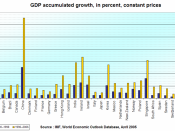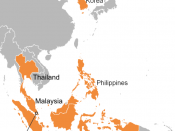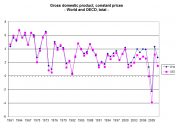In the first half of the 1990s when the economy grew at an annual average rate of 6%, inflation rate, measured by the consumer price index, rose faster at an average rate of 7.8%. In the wake of the Asian financial crisis in October 1997, which sent most Asian Pacific countries into recession, hit hard on Macau's economy. Real GDP did not grow in 1997 and declined by an estimated 31/2 percent in 1998. Inflation declined from about 5 percent in 1996 to 31/2 percent in 1997 and further to about 1/4 percent in 1998. In the statistical record of Macau SAR, its first price deflationary year was 1998 and this also marked the beginning of a series of annual deflation. This, together with sharp increases in nominal interest rates in the last two years, led to increases in real interest rates, which in turn contributed to sluggish economic activity.
The unemployment rate increased over the period, unemployment rate rise gradually from 2.7% in the last quarter of 1997 to a peak of 7.1% in the second quarter of 1999, and evidence suggests that median monthly wages fell in the first half of 1998. The inflation rate decreased year by year. In 2000, the inflation rate was -1.61%. Macau's real GDP growth sustained its positive path in 2001 while its inflation rate remained in negative territory of -1.99%. Changes in GDP deflator and consumer prices were both -2.0%. The negative inflation rate continued and became worse in 2002 to -2.64%. The Macau's economy became recovered by 2003 where the inflation rate is -1.48%.
Chart 1 shows the movements of GDP growth (both nominal and real) and changes in prices (GDP deflator and composite consumer price index) of Macau until 2001. As indicated by the changes in the four variables, positive...


